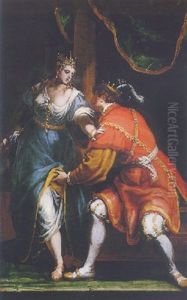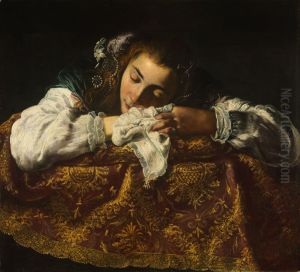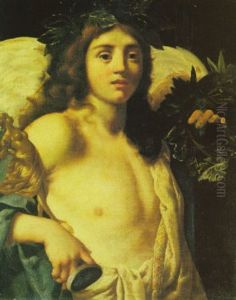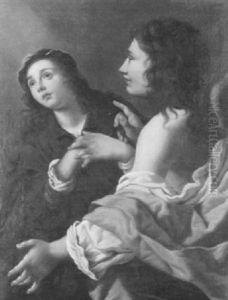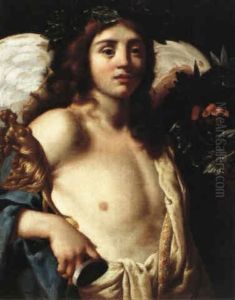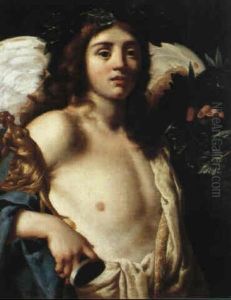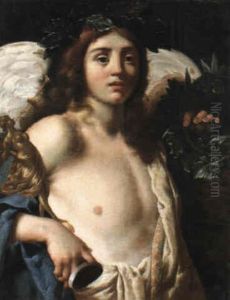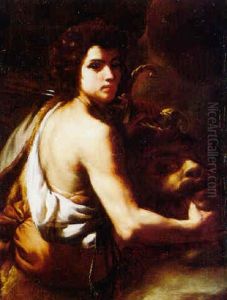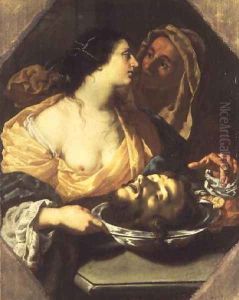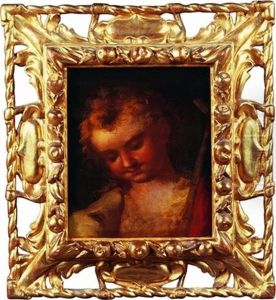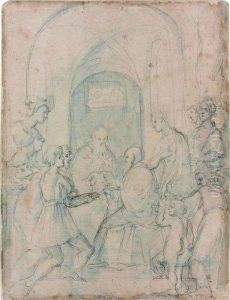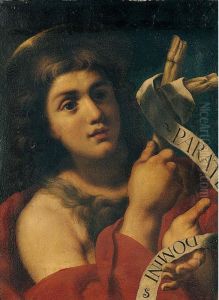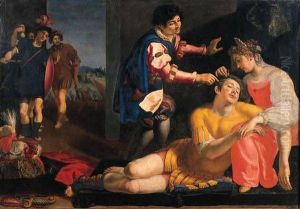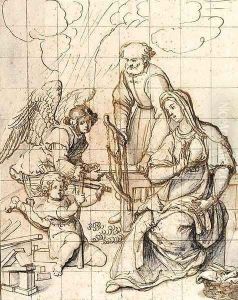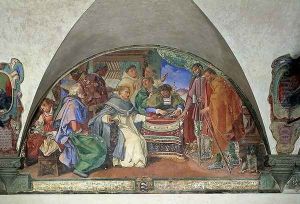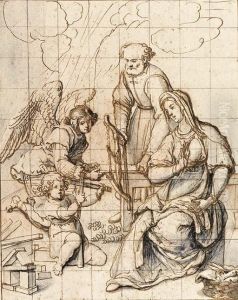Sigismondo Coccapani Paintings
Sigismondo Coccapani was an Italian architect, engineer, and painter, active during the late Renaissance and early Baroque periods. Born in Florence in 1583, he was deeply influenced by the artistic and architectural environment of his hometown, which was a vibrant center for the arts during his lifetime. Coccapani was a contemporary of many important artists and architects of the period, and his work reflects the transition between the Renaissance's harmony and proportion and the Baroque's dynamism and complexity.
Coccapani's early training and career details are somewhat obscure, but it is known that he was involved in a wide range of artistic and architectural projects. He was particularly known for his skill in perspective, which he applied not only in his paintings but also in his architectural designs. This expertise led to his involvement in stage design, where he could create elaborate illusionistic effects for theatrical productions, a popular entertainment of his time.
Among his architectural works, Coccapani is credited with the design of several important buildings and structures in Florence and its surroundings. However, his contributions were often overshadowed by his more famous contemporaries, such as Galileo Galilei, with whom he shared an interest in mathematics and science. This scientific curiosity influenced Coccapani's architectural and engineering projects, where he applied geometric principles and innovative techniques.
Coccapani's paintings, though less well-known than his architectural designs, demonstrate a keen eye for detail and a profound understanding of human anatomy, likely influenced by the work of earlier Renaissance masters. His artistic output includes religious and mythological themes, characterized by vibrant colors and dynamic compositions that hint at the emerging Baroque style.
Sigismondo Coccapani died in Florence in 1643, leaving behind a legacy that, while not as celebrated as some of his peers, contributed significantly to the architectural and artistic developments of his time. His work represents a bridge between the Renaissance's clarity and order and the Baroque's emotional intensity and spatial complexity.
